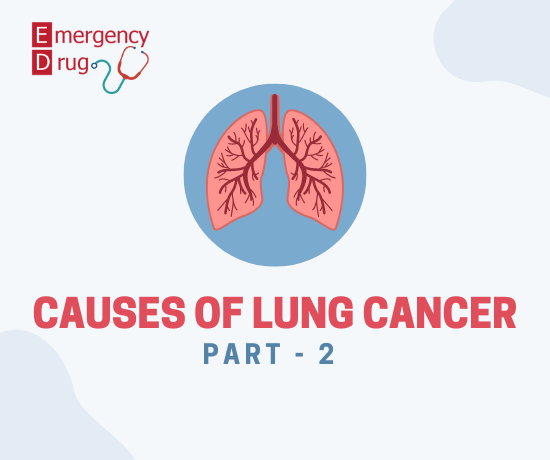Causes of Lung Cancer disease – Part 2
Mohammad Jewel
02 Feb, 2025

Table of Contents
Lung Cancer Disease
Radon gas:
Radon gas is a radioactive gas. Radon gas is a distinctive, synthetically latent gas that is a typical rot consequence of uranium. Radon gas is a characteristic rot product of uranium. It rots to create artifacts that emit ionizing radiation when touched. In the United States, radon gas is a well-known cause of lung cancer illness, with an estimated 12 percent of lung cancer deaths attributable to radon gas, or 15,000 to 22,000 Lung Cancer disease-related deaths each year in the United States.
Similarly, as with the introduction of asbestos, the presence of accompanying smoking greatly increases the risk of malignant lung development in the presence of radon. Radon gas can rise through the earth and enter residences via holes in the building’s foundation, channels, or other openings.
According to the United States Environmental Protection Agency, one out of every 15 residences in the United States has dangerous levels of radon gas. Although radon gas is invisible and odorless, it may be detected using simple test devices. Chemicals and workplace risks: Some drugs have been shown to enhance the chance of developing lung cancer. Asbestos, silica, and diesel exhaust are examples of carcinogens.
People might be exposed to these as a result of their jobs. During the 1960s, asbestos was widely employed in shipbuilding and the construction sector. Although asbestos was outlawed in the United Kingdom in 1999, certain construction workers working on older buildings may still be exposed to it on the job. Work with asbestos is subject to stringent regulations; for example, when working in or repairing buildings that contain asbestos is prohibited. Smoking increases the likelihood of being exposed to asbestos.
Silica is utilized in various construction and material sectors, including the glass manufacturing and bricklaying industries. Individuals who work as bricklayers may be at higher risk of developing lung cancer. As a result, it may lead to the development of silicosis, which raises the chance of developing lung cancer.
Exposure to diesel engine exhaust fumes raises the chance of developing lung cancer. Lung cancer is more common in those exposed to exhaust fumes daily due to their occupation. Professional drivers and technicians are included in this category.
Read Causes of Lung Cancer – part 01
Familial inclination:
Predispositions are passed down via families. While tobacco smoking is associated with most malignant lung growths, not all smokers get lung cancer in the long run. Lung Cancer illness advises that several components, such as individual inherited defenselessness, may play a role in developing lung disease. Lung cancer is more likely to occur in the smoking and nonsmoking relatives of people who have had malignant lung development than in the general population, according to many studies that have been conducted.
The ailment of the lungs:
The presence of specific lung disorders, such as chronic obstructive pulmonary disease (COPD), which are associated with a marginally increased risk (four to multiple times the risk of a nonsmoker) for the progression of malignant lung growth even after the effects of accompanying cigarette smoking is prohibited.
The previous history of malignant lung development is discussed here.
Compared to the general public, those who have overcome malignant lung growth are at greater risk of developing a second lung illness. Non-little cell lung cancer survivors have an increased risk of a second lung malignant development of 1 percent to 2 percent every year after they have recovered from their illness. Every year, the risk of developing a second tumor in patients who have recovered from small cell lung cancers exceeds 6 percent in these patients.
Contamination of the air:
The fact that air pollution may cause lung cancer is well known. The degree of danger is determined by the amount of air pollution you are exposed to regularly. At current levels in the United Kingdom, the additional risk to each individual is expected to be insignificant. In the United Kingdom, exposure to outdoor air pollution is responsible for around one out of every ten (10 percent) lung cancer incidences.
The presence of air pollution from automobiles, industries, and power plants may increase the likelihood of developing malignant pulmonary growth. Up to 1 percent of Lung Cancer disease deaths may be attributed to inhaling polluted air. Experts believe that delayed exposure to very polluted air might provide a risk similar to that of detached smoking by encouraging malignant lung development.
Please see the following link for our lung cancer disease-related medicine products here.

